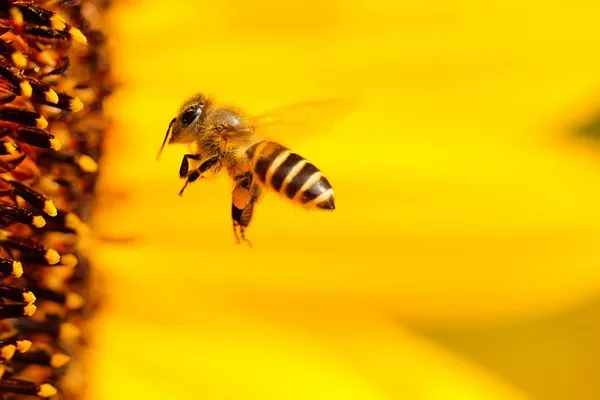The relationship between honey bees and flowers is a delicate and intricate dance of survival and sustenance. As these industrious insects flit from one bloom to another, they play a vital role in pollination, ensuring the reproduction of countless plant species. But have you ever wondered what exactly honey bees collect from flowers? In this article, we will take a deep dive into the fascinating world of pollen and nectar, uncovering the essential role they play in the life of honey bees and the intricate balance that sustains our natural ecosystems.
The Beauty of Pollination
Pollination is a fundamental ecological process that facilitates the transfer of pollen grains from the male parts (anthers) to the female parts (stigma) of flowers. It is a crucial step in the reproductive cycle of flowering plants, leading to the formation of seeds and fruits. Honey bees, along with other pollinators like butterflies, birds, and bats, are key players in this process. As they forage for food, they inadvertently collect and transfer pollen from one flower to another, contributing to the propagation and genetic diversity of plant species.
A Sweet Attraction – Nectar
Nectar is the sweet, sugary liquid secreted by flowers, luring pollinators like honey bees with its irresistible allure. Nectar serves as the primary food source for these industrious insects, providing them with the energy they need to sustain their flights and daily activities. The composition of nectar varies among different plant species, giving rise to an array of flavors and aromas that appeal to a diverse range of pollinators.
Honey bees have specialized tongues called proboscises that allow them to access the nectar deep within the flower’s petals. As they collect nectar, they inadvertently come into contact with the flower’s pollen, initiating the crucial process of pollination.
The Magic of Pollen
While nectar provides honey bees with essential energy, pollen is equally vital for their survival and the prosperity of their colony. Pollen is the fine, powdery substance produced by the male parts of flowers (anthers). It is a rich source of proteins, fats, vitamins, and minerals, making it a nutritious food for honey bee larvae and adult bees.
Honey bees use specialized structures on their hind legs called pollen baskets or corbiculae to collect and transport pollen back to the hive. As they forage, the bees use their mouths to moisten the pollen, making it stick together like a sticky ball. They then pack this pollen ball into the pollen baskets to transport it safely back to their colony.
The Pollination Process
The process of pollination occurs as honey bees collect nectar from flowers and inadvertently pick up pollen grains on their bodies. When they visit another flower of the same species, some of the pollen they carry is transferred to the stigma, facilitating fertilization. The flower’s ovary is then stimulated, leading to the development of seeds and fruit. In this intricate symbiotic relationship, both the plant and the honey bee benefit—the plant gets to reproduce, and the bee receives food for itself and its colony.
The Dance of Flower Selection
Honey bees are discerning foragers, with each bee in the colony performing a unique “waggle dance” to communicate the location of a rich nectar or pollen source to its fellow hive mates. These dances involve specific movements, sounds, and vibrations that convey the distance, direction, and quality of the food source.
The choice of flowers visited by honey bees depends on various factors, including their nutritional needs, distance from the hive, and environmental conditions. As they scout for nectar and pollen, honey bees contribute to the cross-pollination of diverse plant species, promoting biodiversity and a healthy ecosystem.
Impact on Agriculture and Biodiversity
Honey bees are not only essential for the natural world but also for human agriculture. Their role in pollination directly impacts crop production, ensuring the yield and quality of fruits, vegetables, nuts, and oilseeds. Farmers often rely on managed honey bee colonies to enhance crop pollination and increase agricultural productivity.
In recent years, however, there has been growing concern about honey bee populations facing decline due to various factors, including habitat loss, pesticides, diseases, and climate change. The decline of honey bees can have far-reaching consequences, not only for agriculture but also for the overall health and diversity of ecosystems.
Conservation Efforts and Beekeeping
Recognizing the vital role of honey bees in pollination and ecosystem health, efforts to conserve and protect honey bee populations have gained momentum. Conservation initiatives aim to preserve natural habitats, provide bee-friendly landscapes with diverse flowering plants, and minimize the use of harmful pesticides that can negatively impact bees and other pollinators.
Beekeeping, or apiculture, has also become an essential practice for both commercial and hobbyist beekeepers. Beekeepers maintain managed colonies of honey bees, providing them with suitable shelter, nutrition, and healthcare. Beekeepers also harvest surplus honey and other bee products like beeswax, pollen, and royal jelly, while ensuring the health and well-being of the bees.
Conclusion:
Honey bees, nature’s tiny pollination heroes, play a vital role in the intricate dance of life between flowers and plants. As they collect nectar and pollen, they inadvertently facilitate the reproduction of countless plant species, ensuring the continuation of ecosystems and the sustenance of life on our planet. Understanding what honey bees collect from flowers offers us a glimpse into the awe-inspiring complexity and beauty of nature’s interconnected web. As we appreciate the significance of these industrious insects, let us also recognize the importance of conserving and protecting honey bee populations, promoting biodiversity, and ensuring the health of our natural world for generations to come.


